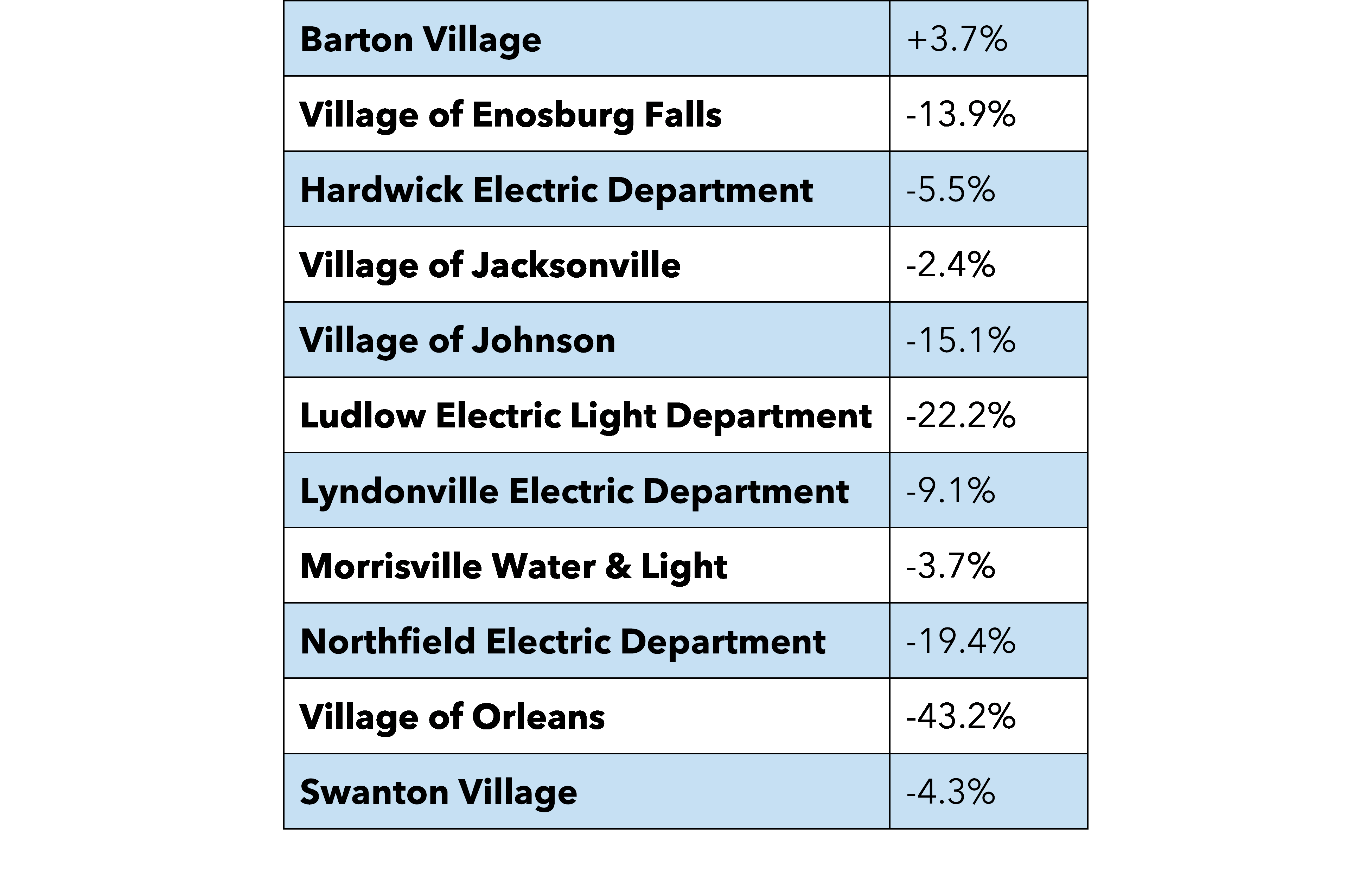COVID-19 Safety Measures Create a Decrease in Electricity Use
As Vermonters combat COVID-19 by staying at home, electricity use has abruptly and drastically decreased across small, community-owned utilities. This is largely due to Vermont businesses temporarily shutting down in accordance with the governor’s Stay Safe, Stay at Home order. While home energy use has risen marginally, it has not compensated for the steep reductions in commercial and industrial loads. Several VPPSA member utilities provide a sizeable portion of their electric service to large businesses and are therefore exceptionally vulnerable to financial losses.
The economy within the Village of Ludlow typically thrives on tourism generated by skiers visiting from the fall through the spring. The Okemo Mountain Resort has a large snow making capability that is partially powered by electricity. In the month of April, Ludlow Electric Light Department, the community-owned electric utility within the Village of Ludlow, experienced a 22.2% overall reduction in electricity use partly due to the resort’s early closure.
There are two main economic drivers in the Town of Northfield: Norwich University and the Cabot Hosiery Mill, home to Darn Tough socks. With mandated school closings and reduced operations at the sock mill, the Northfield Electric Department has experienced a 19.4% decline in electric load throughout April.
The hardest hit VPPSA member municipal electric utility is the Village of Orleans. Located in the heart of the Northeast Kingdom, Orleans is home to the only Ethan Allen furniture manufacturing plant in the country. On March 25, Ethan Allen sent 275 Vermont workers home as it temporarily closed its doors. The Village of Orleans electric department has since experienced a whopping 43.2% decrease in load as compared with April last year.
Lower electric loads have two immediate impacts on the utility, with the first being a loss of utility revenue. There is a direct relationship between electric load and electric sales. As loads decrease, electric utilities collect less revenue from their customers. VPPSA’s members are not-for-profit municipal electric utilities and do not have large reserves or stockholders to absorb losses. The revenue they collect is used to pay for the utility’s operating costs, including purchasing enough wholesale power supply to meet their customers’ needs. To maintain stable retail rates, this is often done through long term contracts – anywhere from five to twenty-five years long – with fixed amounts of electricity and locked-in prices.
This leads to the second consequence of load decline: a surplus of electricity supply. When a utility relies on long term contracts for power supply and experiences a sudden loss of load, it finds itself with an abundance of purchased power. Fortunately, this scenario does not prevent electricity from flowing and most Vermonters will not experience any disruption of service. The concern is an economic one since the excess supply must be resold in the wholesale power market. In an environment where all utilities are experiencing load declines, this surplus must be sold at prices lower than the cost of the electric supply itself, so utilities are reselling their power at a financial loss. The more excess power a utility must resell, the more money it loses.
While several VPPSA members are suffering severe losses due to business closures, others are faring slightly better. Many of Vermont’s municipal electric utilities serve a diverse mix of large industries, small and medium businesses, and residential households. Those with a larger base of residential customers are tending to see smaller declines in load. Morrisville Water & Light Department, run by the Village of Morrisville, only felt a 3.7% load decrease throughout April. Barton Village Electric Department serves mostly residential households and saw an April increase in load by 3.7%.
The below table shows the April 2020 change in electric load as compared to April 2019.


